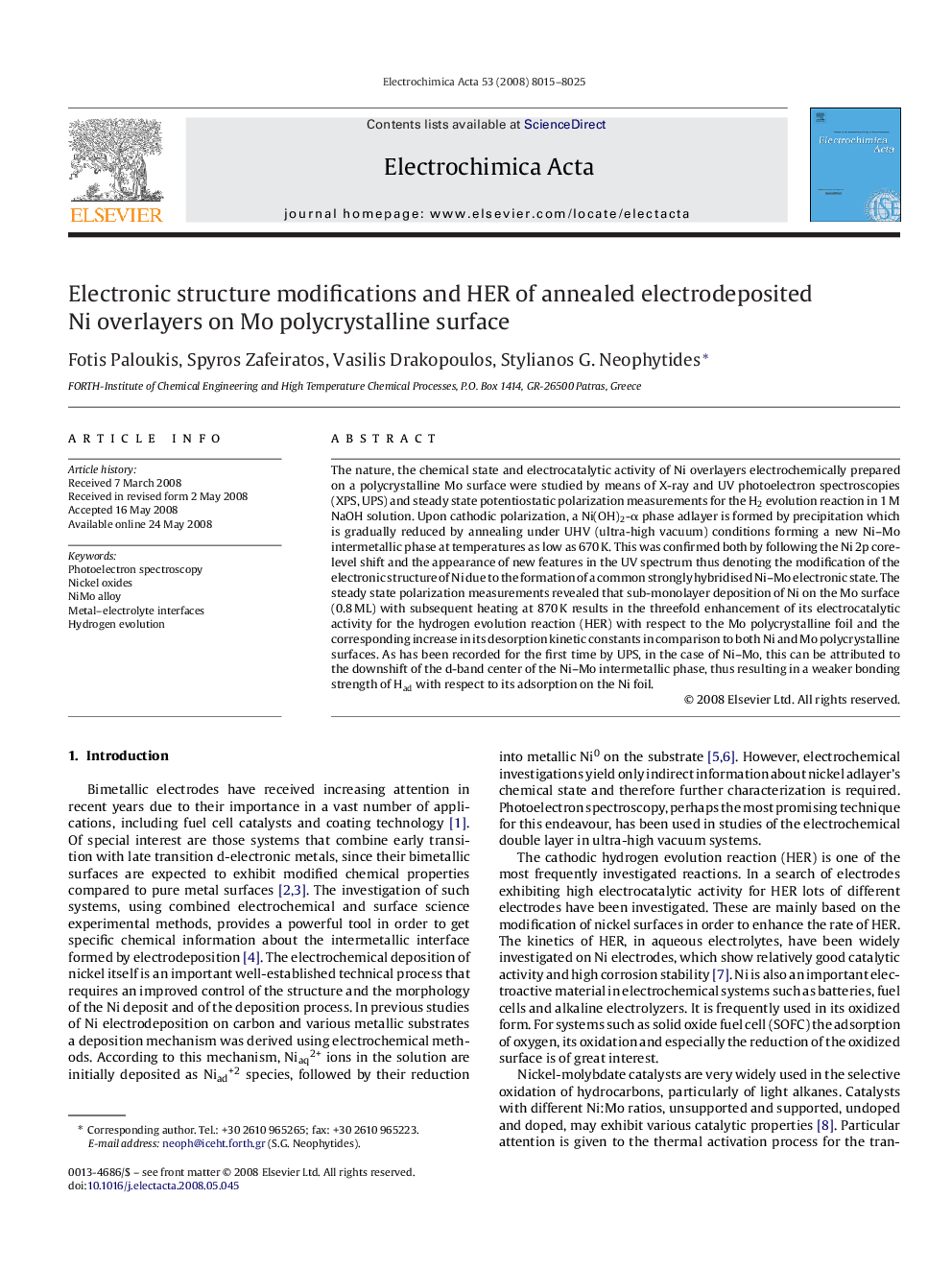| Article ID | Journal | Published Year | Pages | File Type |
|---|---|---|---|---|
| 194623 | Electrochimica Acta | 2008 | 11 Pages |
The nature, the chemical state and electrocatalytic activity of Ni overlayers electrochemically prepared on a polycrystalline Mo surface were studied by means of X-ray and UV photoelectron spectroscopies (XPS, UPS) and steady state potentiostatic polarization measurements for the H2 evolution reaction in 1 M NaOH solution. Upon cathodic polarization, a Ni(OH)2-α phase adlayer is formed by precipitation which is gradually reduced by annealing under UHV (ultra-high vacuum) conditions forming a new Ni–Mo intermetallic phase at temperatures as low as 670 K. This was confirmed both by following the Ni 2p core-level shift and the appearance of new features in the UV spectrum thus denoting the modification of the electronic structure of Ni due to the formation of a common strongly hybridised Ni–Mo electronic state. The steady state polarization measurements revealed that sub-monolayer deposition of Ni on the Mo surface (0.8 ML) with subsequent heating at 870 K results in the threefold enhancement of its electrocatalytic activity for the hydrogen evolution reaction (HER) with respect to the Mo polycrystalline foil and the corresponding increase in its desorption kinetic constants in comparison to both Ni and Mo polycrystalline surfaces. As has been recorded for the first time by UPS, in the case of Ni–Mo, this can be attributed to the downshift of the d-band center of the Ni–Mo intermetallic phase, thus resulting in a weaker bonding strength of Had with respect to its adsorption on the Ni foil.
